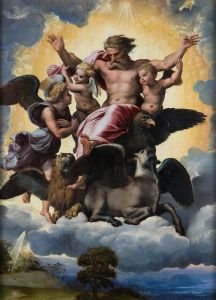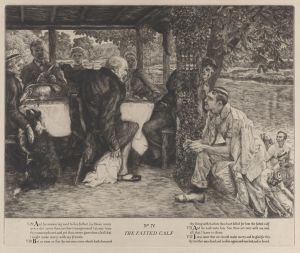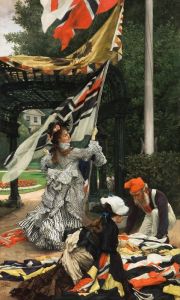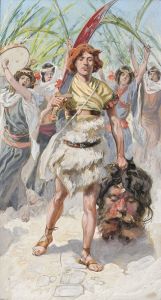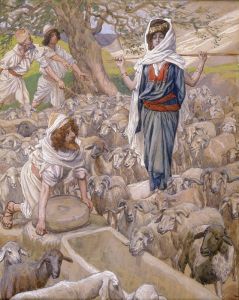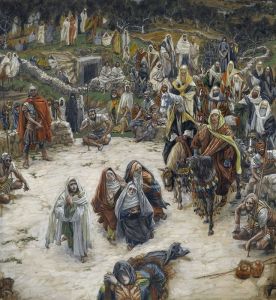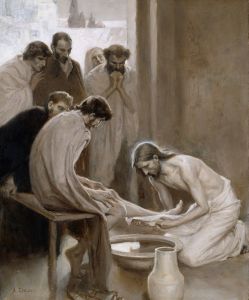
The Wisdom of Solomon
A hand-painted replica of James Tissot’s masterpiece The Wisdom of Solomon, meticulously crafted by professional artists to capture the true essence of the original. Each piece is created with museum-quality canvas and rare mineral pigments, carefully painted by experienced artists with delicate brushstrokes and rich, layered colors to perfectly recreate the texture of the original artwork. Unlike machine-printed reproductions, this hand-painted version brings the painting to life, infused with the artist’s emotions and skill in every stroke. Whether for personal collection or home decoration, it instantly elevates the artistic atmosphere of any space.
James Tissot's painting "The Wisdom of Solomon" is a notable work that reflects the artist's interest in biblical themes and his meticulous attention to detail. James Tissot, a French painter and illustrator, was born on October 15, 1836, and became well-known for his detailed and narrative-driven works. His career spanned various genres, but he is particularly remembered for his religious paintings, especially those depicting scenes from the Bible.
"The Wisdom of Solomon" is part of Tissot's extensive series of watercolors illustrating the Bible, which he worked on during the latter part of his career. This series is known as "The Life of Christ" and "The Old Testament," and it includes hundreds of paintings that Tissot created after traveling to the Middle East to gain a deeper understanding of the historical and cultural context of the biblical stories.
The painting "The Wisdom of Solomon" depicts the famous biblical story from the Old Testament, specifically from the First Book of Kings (1 Kings 3:16-28). This story illustrates King Solomon's legendary wisdom. According to the biblical narrative, two women came to King Solomon, each claiming to be the mother of a baby. Solomon proposed to cut the baby in two, giving half to each woman. The true mother immediately offered to give up her claim to save the child's life, revealing her identity to Solomon, who then awarded her the baby.
Tissot's depiction of this scene is characterized by his typical attention to historical accuracy and detail. He was known for his efforts to portray biblical events with authenticity, often incorporating elements from his travels in the Holy Land. His works are noted for their vivid colors, intricate details, and the ability to convey the emotional depth of the scenes.
The painting captures the dramatic moment of Solomon's judgment, with the figures arranged to highlight the tension and emotion of the scene. Tissot's use of color and composition draws the viewer's eye to the central figures, emphasizing the wisdom and authority of Solomon as well as the desperation and relief of the true mother.
Tissot's biblical series, including "The Wisdom of Solomon," was well-received in his time and continues to be appreciated for its artistic and historical value. The series was exhibited in Paris and London, attracting significant attention and acclaim. Today, many of Tissot's biblical paintings, including this one, are housed in the collection of the Brooklyn Museum in New York, where they continue to be studied and admired by art historians and the public alike.
James Tissot's work on biblical themes represents a significant contribution to religious art in the 19th century, blending his artistic skill with a deep interest in the cultural and historical contexts of the stories he depicted. "The Wisdom of Solomon" stands as a testament to his ability to bring these ancient narratives to life with clarity and emotional resonance.





